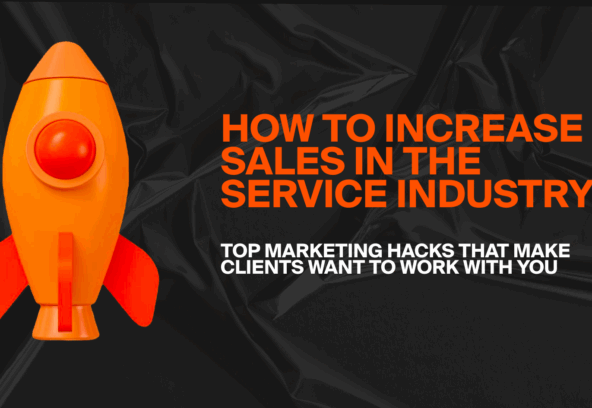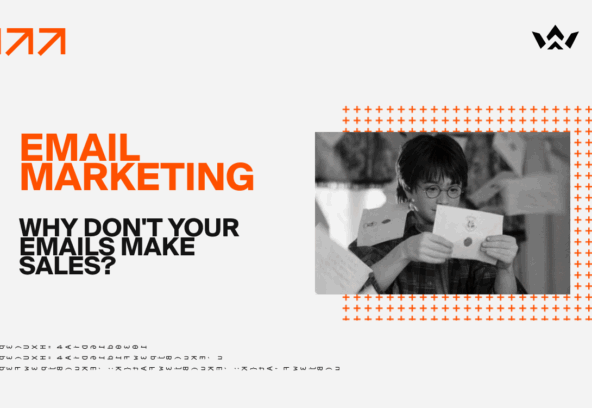
Hi everyone! Last time, we focused on B2C marketing—but we couldn’t overlook the “business-to-business” segment, better known as B2B.
If you’re looking to promote your products or services to other businesses through online channels—and do it effectively—this article is for you. Dive in, we promise it’ll be packed with value!
What’s the difference between B2B and B2C?
B2B (Business to Business) is when a business sells to another business. B2C (Business to Consumer) is when a business sells to you, the individual customer—like a kettle or a pair of sneakers.
When you’re cold, you just grab a jacket and put it on. Maybe you even buy a new one from the nearest store if you’re tired of the old one. It’s quick, simple, and doesn’t involve consulting a fashion expert or making a budget report.
That’s how B2C works: a person has a need—they go and satisfy it. Fast, impulsive, sometimes driven by a gut feeling (or a discount).
But B2B sales are a whole different story. Things get more serious.
Imagine a company with a couple of thousand employees that wants to change its online learning system. This isn’t a simple “I’m cold, I’ll put something on.” It’s more like: “Let’s form a committee, discuss the development strategy, run a tender, test different solutions, and maybe approve the purchase sometime next year.”
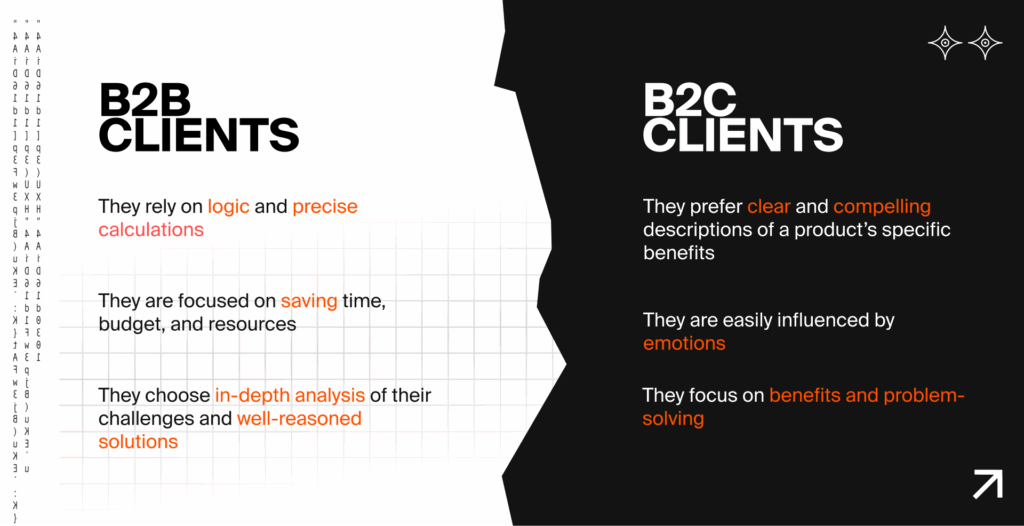
Why is it so long and complicated?
Because the efficiency of hundreds of people is at stake. A mistake is costly: an uncomfortable jacket is annoying, but a bad corporate system is a nightmare. Dozens of people are involved—from IT to finance and training departments.
That’s why B2B sales require a deeper understanding of the client: who makes the decisions, what their pain points are, what bureaucracy they face, and what they fear most—the failure of the project or missing the deadline.
And yes, a good B2B salesperson sometimes needs to be a psychologist, a diplomat, and a bit of a mind reader.
CJM (Customer Journey Map)
Earlier, we wrote that a B2B purchase isn’t about a quick buy—it’s a full journey with stops, a map, and questions like, “Are we really headed in the right direction?”
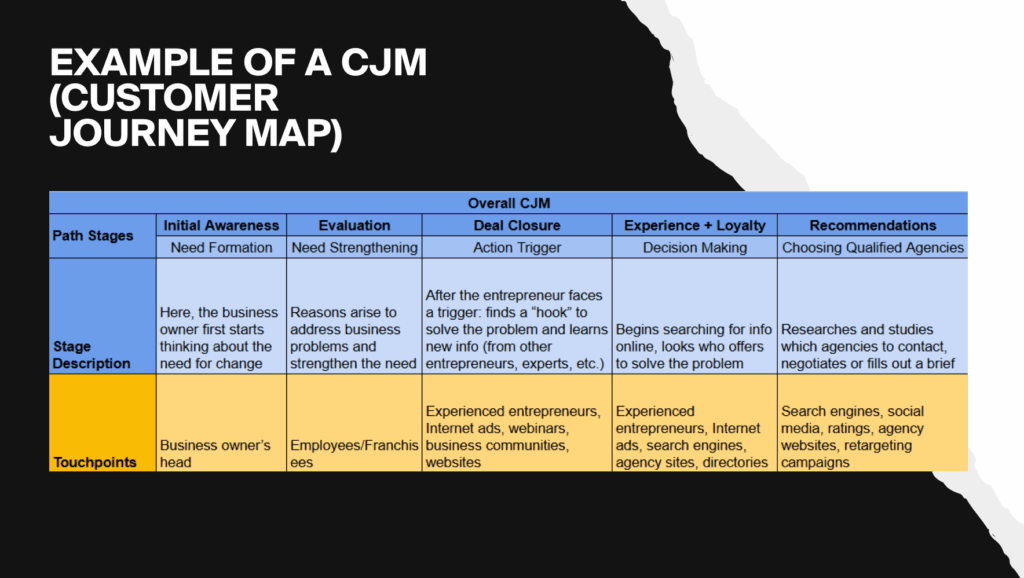
This journey usually consists of many stages, but it’s important to highlight three main ones: Awareness, Consideration, and Decision. Let’s take a closer look at each.
Awareness: The client realizes there’s a problem
At this stage, the company encounters a specific challenge or notices inefficiency in its business processes. For example, management may see that employees are spending too much time on manual data processing and start considering automation.
The marketing goal at this stage is not to sell, but to educate. Suitable content includes:
- Articles that help identify the problem
- Analysis of the consequences of inaction
- Guides on the first steps toward a solution
Consideration: the client explores options
The problem has already been identified — now it’s time to find possible solutions. The company starts looking for tools, comparing offers, and gathering feedback from colleagues and experts.
At this stage, your goal is to show why your solution deserves their attention. What works well here:
- detailed comparisons,
- case studies,
- webinars or articles with practical tips.
Example: an analytical article like “Comparison of 5 Popular Automation Platforms” or a case study “How We Helped a Company Cut Reporting Time by 3x.”
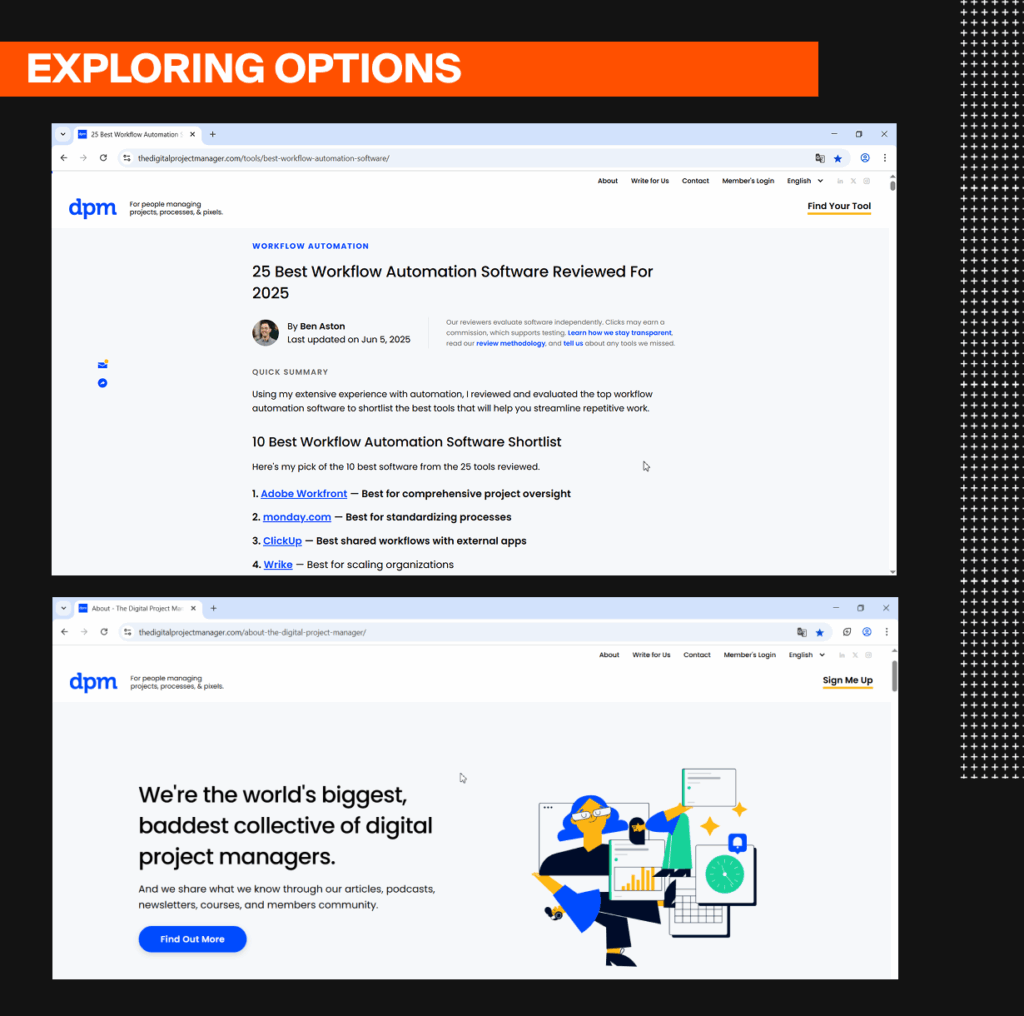
Decision Stage: Choosing a Vendor
At this final stage, the client already has a shortlist of potential providers. Now it’s crucial to give them one last, compelling reason to choose you. This is where trust, reliability, and clear advantages matter most.
What can help:
- A free trial or live demo
- A personalized approach — addressing the client’s specific concerns
- Trust signals — testimonials, case studies, industry recognition
Example: “Try our product free for 14 days” or “See how our solutions helped industry leaders succeed.”
Why This Matters
The better you understand your customer journey, the more precisely you can align your marketing and communications. In B2B, this is especially critical — decisions aren’t made on impulse, but through thorough evaluation. Your goal is to be helpful and persuasive at every stage.
Target Audience Analysis
Once you’ve gained some understanding of your niche and the overall market landscape, it’s time to dig deeper: who exactly is your customer? After all, the easiest way to sell is to someone who genuinely needs what you offer.
Think about your ideal customer — not a fictional character, but a profile built from real data and observations. Create a portrait of the right person you’d want to work with.
Ask yourself a few key questions:
- What is their job title?
- What industry are they in?
- Is their business small, medium, or large?
- What challenges do they face most often?
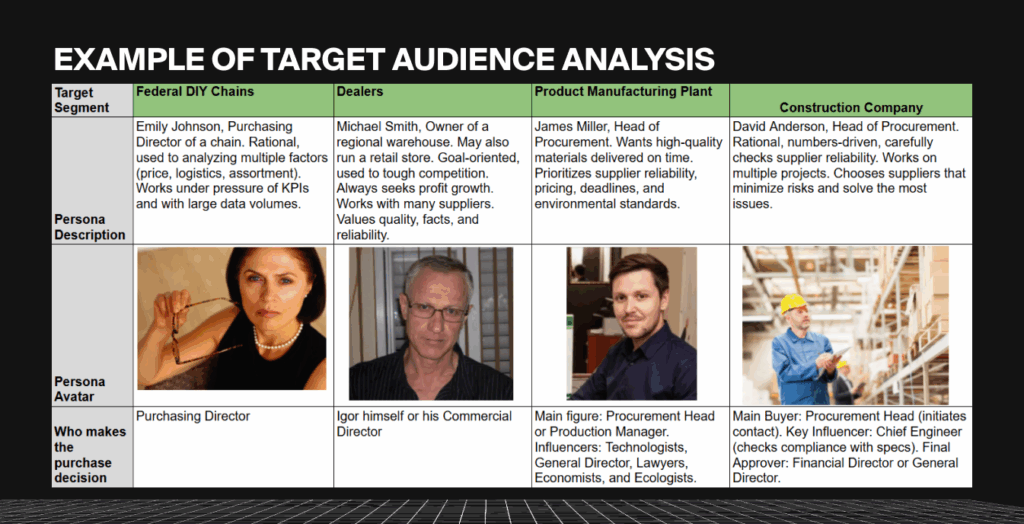
Suppose you’re automating accounting.
Then your ideal client is a company owner with one accountant and a ton of routine tasks: reports, taxes, payments to suppliers. They don’t have time to go through spreadsheets or double-check numbers manually — they need a solution that works on its own.
To make it easier — give your ideal client a name (for example, Sam, a bakery owner in Miami) and find a suitable picture. This isn’t just a game — it helps you choose the right words, offers, and ads more precisely.
Segment your clients
Now let’s divide potential clients into categories. This helps tailor communication for each segment to be as personalized and accurate as possible. Here are three helpful approaches:
By business (firmographics)
Look at the industry, company size, and location.
Example: “We want to work with companies of up to 20 employees in the retail or services sector.”
By person (demographics)
Focus on job titles, age, and level of responsibility.
Example: “Our client is a business owner or manager aged 30–50 who makes financial decisions themselves.”
By mindset (psychographics)
Look at values, priorities, and work approach.
Example: “We target those who dislike paperwork and are looking for ways to simplify their business.”
Competitor Analysis: Understand Who Your Competitors Are (and Why You’re Better)
Imagine you’re launching a service to automate supplier management — for example, a platform where companies can easily handle orders, invoices, and shipments. Sounds useful, right? But… there are already similar solutions on the market.
What should you do? Conduct a competitor analysis — in other words, understand who is already offering similar services, how exactly they do it, and how you can stand out.
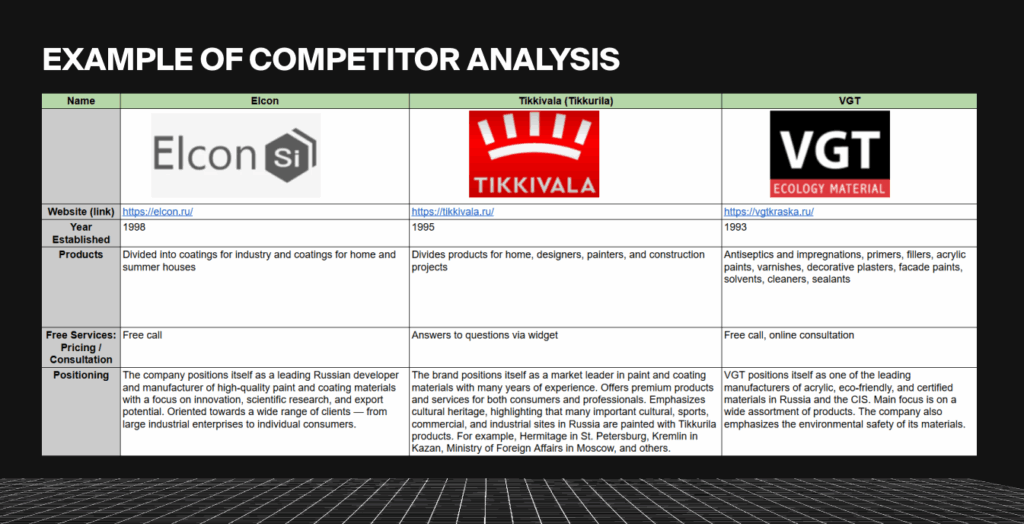
Even if your product is similar, you might have a unique feature. For example:
You also automate supplier workflows, but you’re the only one who does it in both Russian and English — plus, you offer live customer support with fast response times. This alone can be the deciding factor for a client.
SWOT Analysis
This is a simple way to understand where you’re strong, where you’re weaker, what can be improved, and what risks exist. Let’s break it down using the example of a B2B service for construction companies that helps track materials and deliveries.
Strengths
What are competitors good at?
Let’s say one of them has been on the market for a long time and has an advanced CRM system. Another offers integrations with 1C or QuickBooks. These are strengths that customers value.
Weaknesses
Where do they fall short?
For example, maybe they have a clunky interface, or their system doesn’t work on mobile devices — which is critical in construction. You could offer a user-friendly mobile dashboard that even a foreman can easily use on their phone.
Opportunities
Where can you grow?
You notice that almost none of your competitors offer training or full-service onboarding. You could add free training sessions and support for the first two months — and attract clients with that.
Threats
What external factors could interfere?
For example, a big player like MoySklad or SAP might launch a new feature. Or a law might change, making decision-making harder for your clients.
The main thing — don’t just copy, find your own advantage
Competitor analysis isn’t about envy — it’s about taking a clear-eyed look at what others are doing, how you can do it better, and where you can offer more value.
Even in a crowded B2B niche, you can still stand out by offering:
- faster onboarding,
- transparent analytics,
- a personal account manager,
- an intuitive interface,
- flexible customization for specific industries.
Position Your Brand with a USP (Unique Selling Proposition)
Once you’ve identified your strengths and studied what your competitors do well — or not so well — the next step is to turn that into a clear, compelling message for your customers.
This is called positioning — how you want your audience to perceive your brand. It’s not just about the design or name — it’s about the essence: what sets you apart and what specific value you provide.
In B2B, the best tool for this is a USP — Unique Selling Proposition. It’s a short statement that explains how your product or service solves the customer’s problem. It should be clear, specific, and competitive.
How to Create a Unique Selling Proposition (USP)
Understand What Matters to the Customer
Start by identifying the real challenges and pain points your audience faces.
For example, if you sell software for transportation companies, your clients might struggle with delivery delays, route confusion, or poor driver oversight.
If you’re a B2B agency working with medical centers, their goal may not simply be “increasing website traffic,” but rather scheduling actual patient appointments — without overwhelming the doctors.
Clearly State How You Solve the Problem
Describe how your solution effectively addresses the issue. Avoid generic claims like “we improve efficiency” or “we help businesses grow” — they sound too vague. Be specific.
For example:
- We implement CRM systems in 3 days without interrupting sales.
- We reduce cost-per-lead from paid search ads by 1.5× using targeted medical segmentation.
- We build reports that even a non-marketing-savvy business owner can understand.
Create a Short, Clear Statement
Your USP should be short and specific — something you can place on your website homepage, include in a pitch deck, or say at a business meeting.
Examples:
- We automate document workflows in manufacturing, saving your legal team up to 15 hours a week.
- Marketing for construction companies with performance forecasting. If we miss KPIs — you get your money back.
- CRM for wholesalers: no overpaying for unnecessary features — focused on ordering, logistics, and payments.
What the Result Should Be
A USP isn’t a catchy slogan — it’s the core of your offer, explained in plain language. It helps prospects immediately understand what makes you different and why your solution is worth their attention.
If you’ve done it right, a potential customer should read your positioning and think: “This is exactly what we need.”
In the next article, we’ll explore the main customer acquisition channels in B2B marketing, as well as the hidden pitfalls of closing deals. Stay tuned!
Schedule free marketing consultation
Learn how to stop wasting ad spend and turn marketing into real profit
